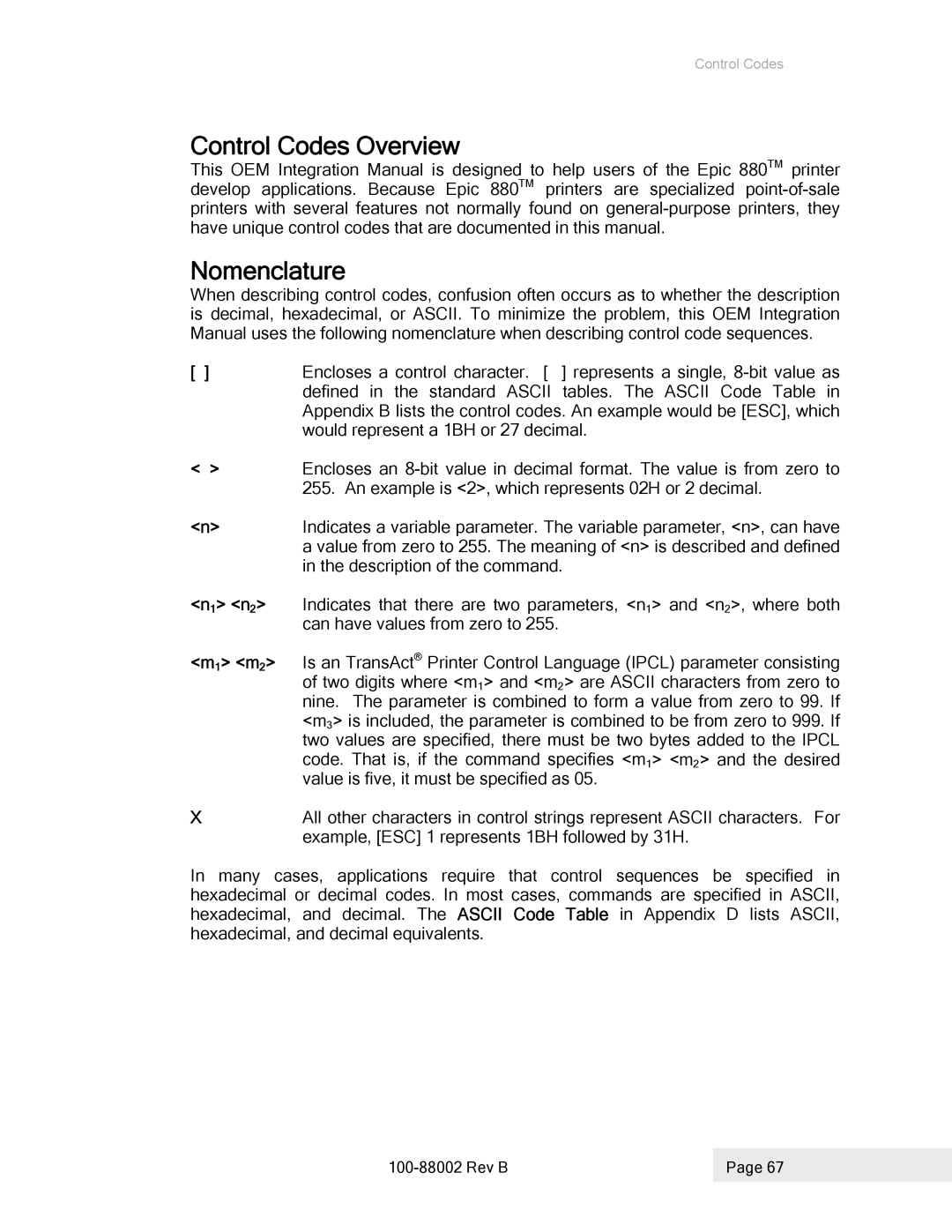Control Codes
Control Codes Overview
This OEM Integration Manual is designed to help users of the Epic 880TM printer develop applications. Because Epic 880TM printers are specialized
Nomenclature
When describing control codes, confusion often occurs as to whether the description is decimal, hexadecimal, or ASCII. To minimize the problem, this OEM Integration Manual uses the following nomenclature when describing control code sequences.
[ ] | Encloses a control character. [ ] represents a single, |
| defined in the standard ASCII tables. The ASCII Code Table in |
| Appendix B lists the control codes. An example would be [ESC], which |
| would represent a 1BH or 27 decimal. |
< > | Encloses an |
| 255. An example is <2>, which represents 02H or 2 decimal. |
<n> | Indicates a variable parameter. The variable parameter, <n>, can have |
| a value from zero to 255. The meaning of <n> is described and defined |
| in the description of the command. |
<n1> <n2> | Indicates that there are two parameters, <n1> and <n2>, where both |
| can have values from zero to 255. |
<m1> <m2> | Is an TransAct® Printer Control Language (IPCL) parameter consisting |
| of two digits where <m1> and <m2> are ASCII characters from zero to |
| nine. The parameter is combined to form a value from zero to 99. If |
| <m3> is included, the parameter is combined to be from zero to 999. If |
| two values are specified, there must be two bytes added to the IPCL |
| code. That is, if the command specifies <m1> <m2> and the desired |
| value is five, it must be specified as 05. |
XAll other characters in control strings represent ASCII characters. For example, [ESC] 1 represents 1BH followed by 31H.
In many cases, applications require that control sequences be specified in hexadecimal or decimal codes. In most cases, commands are specified in ASCII, hexadecimal, and decimal. The ASCII Code Table in Appendix D lists ASCII, hexadecimal, and decimal equivalents.
| Page 67 |
|
|
